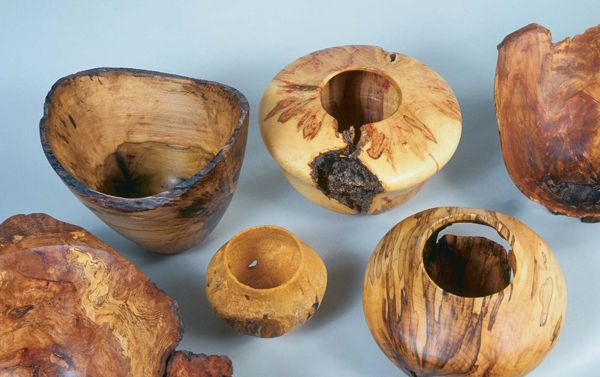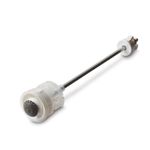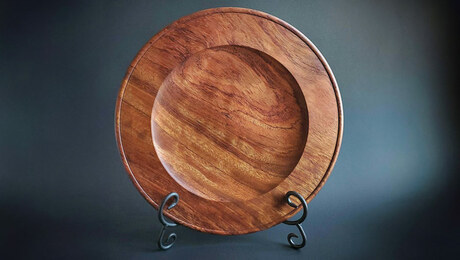Turning Rotted Wood
The dregs of your woodpile can yield some beautiful results
Synopsis: The fungi that cause spalting will eventually lead to rotting if left unchecked. The condition of much of the wood Robert J. Lentz uses falls somewhere in between incipient and advanced decay. He starts his explanation with a word of caution about working around microscopic fungal spores and how to protect yourself. Then he talks about finding or making your own spalted wood. He advises turning the exterior slowly, because the wood will vibrate. He defines the rim of the piece he envisions and then turns the interior. He discusses drying the pieces fast or slowly and sanding it on the lathe. His polish of choice is mineral oil and clear wood finish.
Some people cringe at the thought of using rotted wood for anything, especially for turning. Not me. I like it because I can get some really interesting figure and color, and I’m making use of wood that would otherwise be wasted.
I use the word rotted, but many woodworkers prefer spalted to describe lumber showing signs of decay. It’s, really, just a difference of degree. The kinds of fungi that cause spalting (incipient decay) will eventually lead to rotting (advanced decay) if left unchecked. Much of the wood I use falls somewhere in between.
Wood has loomed largely in my life from very early on. As a youngster growing up in Pennsylvania (even the name of that state contains the Latin root of the word sylva, meaning woods), I used to go on rounds with my grandfather, a sawmill foreman. He’d choose the trees to be cut and hauled to the sawmill where he worked. Later on, I worked part-time with my father in my uncle’s furniture store, where I saw how wood grain and color were blended to enhance the beauty of finished furniture. In college, I earned a forestry degree, and until I retired last year, I worked for the U.S. Forest Service on projects throughout this country and in the tropics.
Wood in any stage of decay responds differently to tools than lumber untouched by fungal agents. It takes some practice and some getting used to, but I think the results make it worthwhile. One note of caution: Turning decayed wood releases microscopic fungal spores into the air that can produce severe allergic reactions in some people. So you should wear a good-quality dust mask and ventilate your shop well. I’ve been lucky. So far, I haven’t noticed any unpleasant symptoms.
Find it, or make your own
I look for wood to turn anywhere I can find it. I’ve been known to ask road crews trimming trees on the highway for some of the waste pieces. A neighbor up the road from us, on the eastern shore of Chesapeake Bay, owns an old plantation set among acres of woodlands. He lets me glean pieces of wood lying on the forest floor, which is a great source for decaying wood.
From Fine Woodworking #118
For the full article, download the PDF below:
Fine Woodworking Recommended Products

Bessey EKH Trigger Clamps

Veritas Wheel Marking Gauge

CrushGrind Pepper Mill Mechanism






















Log in or create an account to post a comment.
Sign up Log in